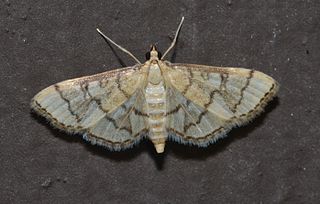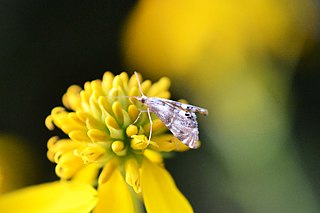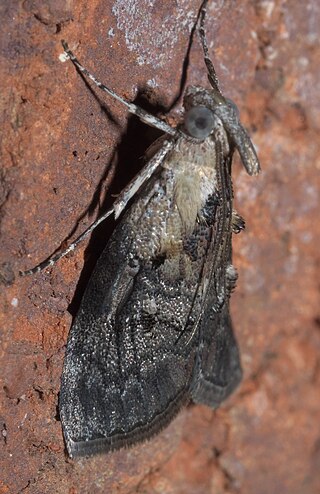
Clarence Coles Phillips was an American artist and illustrator who signed his early works C. Coles Phillips, but after 1911 worked under the abbreviated name, Coles Phillips. He is known for his stylish images of women and a signature use of negative space in the paintings he created for advertisements and the covers of popular magazines.

Gymnelia is a genus of moths in the subfamily Arctiinae. The genus was erected by Francis Walker in 1854.

Leucanopsis is a genus of moths in the family Erebidae. The genus was described by Alfredo Rei do Régo Barros in 1956.

Saurita is a genus of moths in the subfamily Arctiinae. The genus was erected by Gottlieb August Wilhelm Herrich-Schäffer in 1855.

Trichromia is a genus of moths in the family Erebidae erected by Jacob Hübner in 1819. The members of this genus are largely indigenous to South America.
Anarmodia is a genus of moths of the family Crambidae.

Aulacodes is a genus of moths of the family Crambidae. The genus was first described by Achille Guenée in 1854.

Blepharomastix is a genus of moths of the family Crambidae described by Julius Lederer in 1863.

Petrophila is a genus of moths of the family Crambidae. The genus was described by Lansdown Guilding in 1830.

Pococera is a genus of snout moths in the subfamily Epipaschiinae, found mainly in North and Central America. It was described by Philipp Christoph Zeller in 1848.

Apatelodes is a genus of moths of the family Apatelodidae first described by Packard in 1864.
Givira is a genus of moths in the family Cossidae.
Chrysendeton azadasalis is a moth in the family Crambidae. It was described by William Schaus in 1924. It is found in Guyana.
Lipocosma grimbaldalis is a moth in the family Crambidae described by William Schaus in 1924. It is found in Guatemala.
Undulambia asaphalis is a moth in the family Crambidae described by William Schaus in 1924. It is found in Peru.
Blepharomastix caclamalis is a species of moth in the family Crambidae. It was described by William Schaus in 1924. It is found in Colombia.
Blepharomastix caulealis is a species of moth in the family Crambidae. It was described by William Schaus in 1924. It is found in Guatemala.
Blepharomastix bademusalis is a species of moth in the family Crambidae. It was described by William Schaus in 1924. It is found in Peru.
Conchylodes vincentalis is a moth in the family Crambidae. It was described by William Schaus in 1924. It is found in Bolivia.
Microphysetica ambialis is a moth in the family Crambidae. It was described by William Schaus in 1924. It is found in Mexico (Xalapa) and Guatemala.








